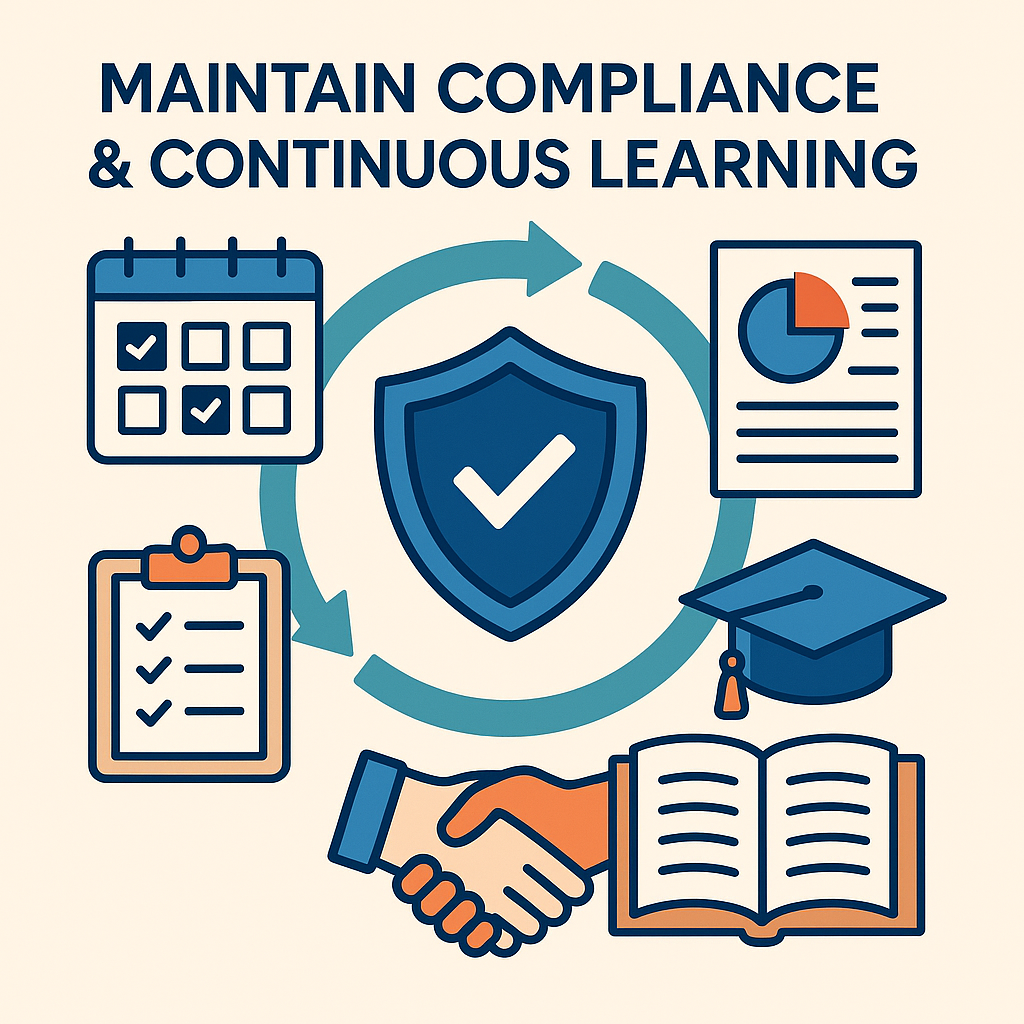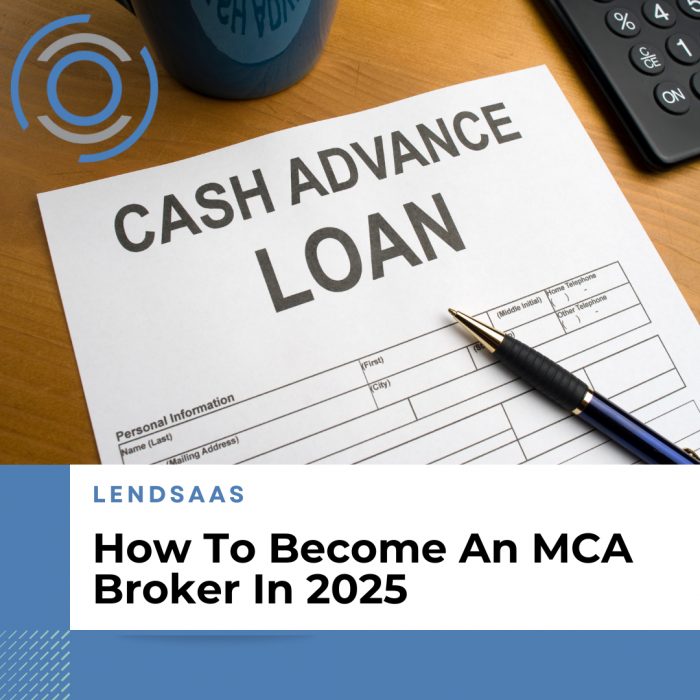The United States merchant-cash-advance (MCA) market has ballooned into a multi-billion-dollar alternative-credit sector, and demand for skilled brokers is accelerating. Yet the pathway is very different from the Wild-West era of a decade ago: 2025 brings a thicket of state disclosure statutes, emerging licensing regimes, and new federal data-collection obligations. This step-by-step guide explains how to become an MCA broker in 2025, from business formation and licensing through compliance and technology. Follow the roadmap below and you’ll launch on solid, future-proof footing.
1. Master the MCA Model and Your Value Proposition
Before you touch a license application, or learn how to become an MCA broker in 2025, be certain you can articulate how an MCA differs from a loan, factoring arrangement, or credit line. MCAs are sales-based financing: the provider purchases a percentage of the merchant’s future receivables at a discount, and the merchant remits a daily or weekly retrieval until the purchased amount plus fees is satisfied.
As a broker your value lies in:
- Sourcing qualified merchants.
- Packaging deals for funders with transparent risk metrics.
- Negotiating competitive factor rates and retrieval percentages.
- Guiding merchants through disclosure forms and post-funding servicing.
Build fluency in underwriting ratios (bank-statement health, average daily balances, NSFs, stacking exposure), factor-rate math, and retrieval-rate feasibility.
2. Evaluate Your Readiness and Research the Market
Conduct a market-sizing exercise for your target geography and verticals. Analyze:
- Deal flow potential (restaurant, trucking, e-commerce, healthcare).
- Average advance size and factor rates by sector.
- Competition—ISOs, direct funders, and “fintech-lite” automated platforms.

Draft conservative revenue projections, factoring in commission splits (traditional 6–10 % of funded volume) and turnaround time for renewals.
3. Form the Right Business Entity and Secure Basic Registrations
Most brokers use an LLC or S-Corp to shield personal assets and qualify for small-business tax advantages. You’ll need:
- Articles of organization/incorporation.
- Employer Identification Number (EIN).
- Basic state business registration and sales-tax account where applicable.
- Errors & Omissions (E&O) insurance; many funders will not contract with uninsured ISOs.
4. Obtain State Licenses and Registrations (Yes, They’re Here)
In 2025, “no-license-needed” is quickly disappearing. Key trends:
| State | Type | Effective date | Broker Obligations |
|---|---|---|---|
| California | Finance Lender/Broker License under CFL | Existing | License required for brokering commercial loans or MCAs; $300 application fee and DFPI oversight. DFPI |
| New York | Commercial Finance Disclosure Law (CFDL) | Active; annual report due each 30 April | Disclose broker compensation on Offer Summary; keep records for three years. deBankedGrant Phillips Law PLLC |
| Missouri | Commercial Financing Disclosure & Broker Registration | 28 Feb 2025 | Registration mandatory for brokers handling 5+ transactions a year. Husch Blackwell |
| Texas | Sales-Based Financing Bill (pending) | Expected 2025 | Registration with Office of Consumer Credit Commissioner (OCCC) before brokering any MCA. deBanked |
Several other states—Florida, Georgia, Utah, Kansas, Connecticut, Virginia—enforce disclosure regimes that indirectly pull brokers into compliance. Check the Nationwide Multistate Licensing System (NMLS) for each jurisdiction you plan to operate in. This is important when learning how to become an MCA broker in 2025.
5. How To Become An MCA Broker In 2025 And Comply with State and Federal Disclosure Rules
Beyond licensure, brokers must ensure merchants receive standardized cost-of-capital sheets:
- California, New York, Florida, Georgia, Kansas, Utah, Virginia already mandate Truth-in-Lending-style disclosures for advances ≤ $500k. DFPIOnyx IQ
- Missouri and Texas add similar forms plus broker‐specific fields in 2025. Husch BlackwellConsumer Finance and Fintech Blog
At the federal level, the CFPB Section 1071 Small-Business Lending Data Rule classifies many MCAs as “credit.” If you arrange ≥ 100 covered transactions annually you will have to collect and report demographic and pricing data on each application beginning as early as October 2025, unless litigation alters the timeline. Taft Law
6. Build Funding and Capital Relationships
Licensing alone won’t earn a dime without capital partners. Assemble a bench of:
- Direct funders that portfolio their own deals.
- Factor-style MCA providers specializing in high-risk sectors.
- Syndication desks if you intend to co-fund.

Negotiate commission structures, submission requirements, and exclusivity clauses. Maintain a matrix of underwriting guidelines so deals are matched efficiently.
7. Develop a Rock-Solid Operational Workflow
An MCA brokerage in 2025 involves dozens of moving parts:
- Lead capture & CRM
- Document aggregation—bank statements, tax returns, processor data
- KYC & OFAC screening
- e-Signature contracts
- Disclosure generation
- Ongoing compliance storage
Attempting this with spreadsheets is a recipe for missed disclosures, data breaches, and broken renewals. That’s why modern MCA brokers rely on purpose-built software.
8. Why MCA Software Is Essential—And Why LendSaaS Leads the Pack
A full-stack MCA platform automates the grind so you can focus on volume and merchant relationships. LendSaaS goes beyond basic deal tracking:
- Bank-statement parsing flags NSFs, alt-lender payments, and cash-flow spikes automatically.
- Automated disclosures—generate California, New York, Texas, Virginia, Utah and multi-state forms in a single click, complete with APR calculations.
- Underwriting engine integrates DecisionLogic, Experian, and Thomson Reuters CLEAR for instant bank-verification and credit pulls.
- Whitelabel ISO & partner portals let you onboard sub-brokers without giving up control.
- Submissions API & e-Sign shorten cycle times from days to minutes.
- Automated ACH collections and real-time servicing dashboards keep renewals (and commissions) flowing.
Just as important, LendSaaS’s Compliance Suite stays current with every new state rule—so when Missouri’s SB 1359 or Texas’s OCCC registration goes live, your disclosure templates update automatically.
9. Market Ethically in a Heightened Regulatory Climate
Use transparent advertising that states factor rates or estimated APR ranges. Avoid statements that imply MCAs are interest-free or “not a loan” if your jurisdiction’s disclosure statute defines them as credit. Provide disclaimers and privacy policies that align with FTC guidance on small-business financing.
Content marketing (blogs, case studies), social proof (reviews from funded merchants), and aligned referral partnerships with CPAs or payment processors now outperform aggressive spam dialing.
10. Maintain Ongoing Compliance and Continuous Learning

- Annual and Quarterly Reports—New York’s CFDL report is due every 30 April; expect similar filings in Missouri and Texas. deBankedHusch Blackwell
- Renew Licenses—California CFL and other state licenses renew yearly; budget for fees and bond increases as volume grows.
- Audit Trails—Maintain digital archives of every signed disclosure, contract, and email for at least three to five years (varies by state).
- Stay Informed—Follow DFPI, NYDFS, OCCC, and industry outlets (e.g., deBanked) for rulemakings and enforcement actions.
Putting It All Together
How To Become An MCA Broker In 2025, it demands more than hustle; it requires a compliance mindset, credible capital relationships, and enterprise-grade technology. By forming a compliant entity, securing the right state licenses, honoring every disclosure rule, and leveraging an MCA platform like LendSaaS, you’ll position your brokerage to thrive as regulation tightens and competition intensifies.
Ready to fast-track your launch?
Explore a live demo at LendSaaS.com and see how automated disclosures, integrated underwriting, and real-time servicing analytics can turn compliance headaches into a competitive edge—so you can focus on closing more deals and scaling revenue in 2025 and beyond.
Schedule a demo now!


Leave a Reply